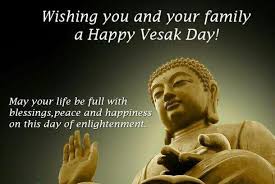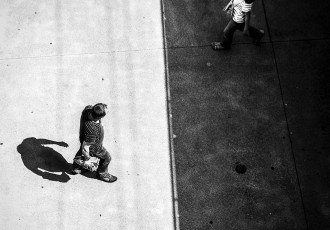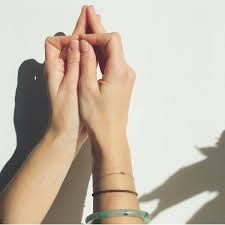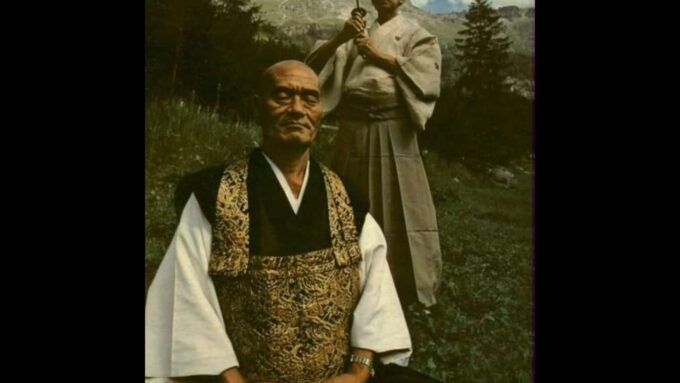In 21 May 2016, Buddhists around the world are celebrating Vesak – the birth, Enlightenment, and passing away of the Buddha Gautama. The Vesak is one of the most important days in the Buddhist calendar – and is observed in May or early June. Also known as “Buddha Day” or “Buddha Purnima”, it commemorates these three big significant events (birth, enlightenment and death of the Buddha Shakyamuni) which are said that occurred on the full moon of the Indian lunar month of Vesakha.
The date differs, depending on the country or culture. The exact date of Vesak is based on the Asian luni-solar calendars and is normally celebrated in Vaisakha month of the Buddhist and Hindu calendars, hence the name Vesak. The old tradition of Vesak is to celebrate all three events, but some modern Buddhist groups celebrate just the birth, and others, the enlightenment.
Traditionally, Buddha Shakyamuni’s birth is supposed to have been in 623 BC, in the sacred area of Lumbini located in the Terai plains of southern Nepal, when the Buddha’s mother is said to have given birth to him, in a day with full moon, in a garden in the Himalayan foothills (while en route to her parents’ home). In Nepal, the birth of Buddha is celebrated on the full moon day of the Vaisakha month of the Hindu calendar, and is traditionally called Buddha Purnima, Purnima meaning the full moon day in Sanskrit.
Festivities for Vesak Day
On Vesak Day the Buddhist temples are decorated with flags and flowers. The devotees are expected to assemble in temples before dawn. The ceremonial rituals like hoisting the Buddhist flag and the bathing of the baby Buddha are done. The monks chant the hymns of the holy triple gem: The Buddha, The Dharma (his teachings) and The Sangha (his disciples). In evening, various candlelit processions are organized in the streets. People recite the preaching of Lord Buddha and try to make resolutions to follow them as much as they can.
One of the most popular rituals on Vesak Day is that of ‘bathing’ the Buddha. Worshipers crowd around basins or pools decorated with garlands of flowers and dominated by a small central elevated statue of the child Siddhartha. Ladlefuls of water are scooped from the basin and poured over the statue, in remembrance of the legend that the infant prince was showered with the waters of nine dragons soon after he was born. This tradition comes in different forms, each country has it’s own practice and rituals.
Only vegetarian meals are eaten. Buddhists organise mass blood donations at hospitals, visit homes for the aged or distribute gifts of cash to the needy. Others release caged birds and animals, a symbol of liberation for Buddhists, or spend hours chanting mantras. People give alms, fruits, food and clothes to poor and needy. People reaffirm their belief in the five principles which are called Pancasila.
On this Holy day, the Buddhists bathe and wear only white clothes. They gather in their viharas for worship and give alms to monks. On Vesak, Buddhists eat kheer, rice cooked in milk and sugar, which they share with the poor. They set up stalls in public places to offer others clean drinking water; fruits and clothes are distributed among the sick people.
In the streets of some cities, the devotees practice the two-hour-long ‘three-step, one-bow’ ritual, taking steps on both knees, bowing at every third step as they pray for world peace, personal blessings and repentance.
Burmese and Sri Lankan Buddhists mark this day by cooking a pot of rice in milk, marking Buddha’s last meal before the long fast that brought him to enlightenment.
The Bodhi tree is also revered. Its branches are decorated with garlands and colored flags. Rows of lamps are lit around the tree, and milk and scented waters are sprinkled on its roots.
Bodh Gaya and Sarnath are two of the best places to enjoy the festival, though celebrations are held at any place where the Buddhist population resides.
In Bodh Gaya, the place where, under the sacred Bodhi Tree, Gautama attained enlightenment, people from all over the world come to attend the ceremonies that take place. Throughout the day, prayer meets, sermons on the life of Gautama Buddha, religious discourse, continuous recitation of Buddhist scriptures, group meditation, processions, worship of the statue of Buddha and symposia take place.
Sarnath is famous as the place where the Buddha delivered his first sermon. On the day of Vesak, a large fair is organized in Sarnath which attracts a large number of people. Relics of the Buddha is brought out for public display in a procession. Apart from this, devotees make a beeline to offer their prayers at the Buddhist temples of Sarnath. They offer fruits, flowers, candles etc. to the Buddha statues, and reaffirm their faith in the practice of Buddhism. The monks take part in prayers, sermons, recitation of Buddhist scriptures. There are many other important religious activities ment to pay their respect to the Enlightened One. Buddhists believe that performing good deeds on Vesak Day would multiply merit many times over.
In the evening, the Buddha statues are illuminated, and the day often ends with candlelight processions through the streets.
Beyond the darkness there is light,
Beyond the darkness there is wisdom,
May the Lord Buddha guide you to the path of glory.
Happy Vesak!!
photo credit: vesak




